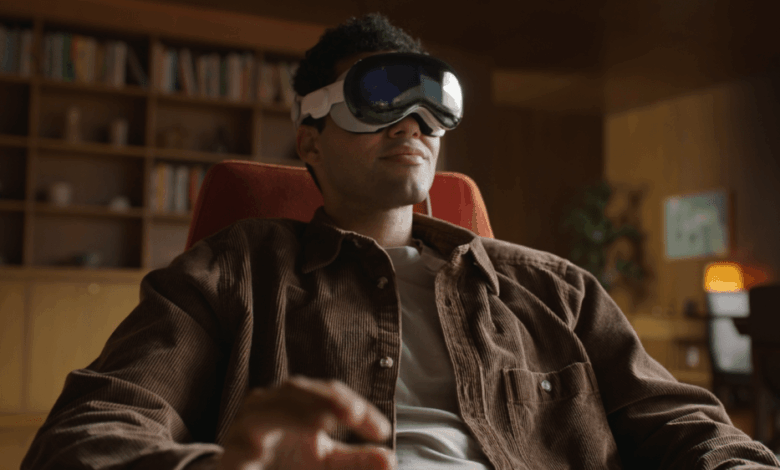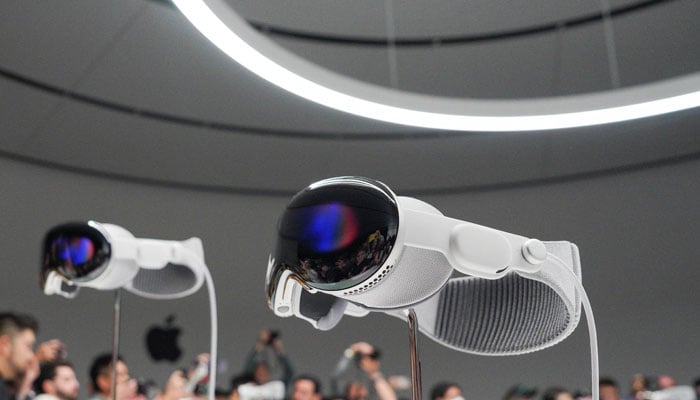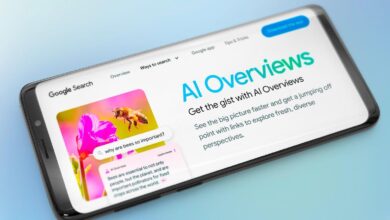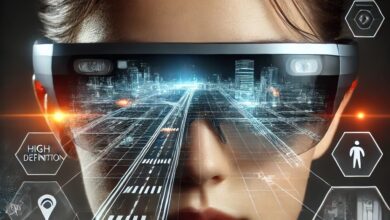This VR Headset Surpasses Apple Vision Pro

The announcement of the Apple Vision Pro sent ripples through the tech world, establishing a new benchmark for spatial computing with its stunning displays, intuitive gesture controls, and seamless ecosystem integration. For many, it became the immediate gold standard. However, in the shadow of this tech giant’s launch, a compelling narrative is unfolding: another headset, often from a more specialized and agile company, is delivering a experience that, in several critical aspects, genuinely surpasses what the Vision Pro offers.
This isn’t about declaring a outright winner; it’s about a fierce competition where a contender outperforms the champion in key rounds. While Apple focuses on a broad, consumer-friendly vision, other devices are honing in on superior performance, unparalleled immersion, and practical utility that appeal to a different, often more demanding, user. This article deconstructs the myth of absolute superiority and reveals which VR headset currently beats the Apple Vision Pro and, most importantly, why.
A. The Contender: Unveiling the True Challenger
The virtual reality landscape is diverse, but one headset consistently emerges as the primary competitor to the Vision Pro in high-end discussions: the Meta Quest Pro (or its upcoming successor, often referred to in leaks as “Quest Pro 2”) or the Varjo XR-4. For the purpose of this deep dive, we will primarily use the Meta Quest Pro as our benchmark challenger, as it represents a more direct consumer-enterprise hybrid competitor, though we will highlight where other headsets like the Varjo excel even further.
The Meta Quest Pro, released before the Vision Pro, was Meta’s ambitious foray into the mixed-reality “prosumer” and enterprise market. It laid the groundwork for many features Apple would later refine but also established strengths that remain potent advantages.
B. Deconstructing Superiority: Key Areas Where This Headset Excels
The argument for a headset beating the Vision Pro isn’t based on a single feature but a combination of hardware philosophy, software freedom, and target audience alignment.
1. The Unmatched Freedom of True Wireless Design
This is arguably the most significant practical advantage. The Meta Quest Pro is a completely standalone, wireless device. Its computing power is built directly into the headset, and it runs on a robust, custom-built Snapdragon chipset. This means absolute freedom of movement. Users can transition from a massive virtual screen in their living room to a passthrough AR experience in their kitchen without a single cable tethering them to a stationary power source or computer.
The Vision Pro Compromise: Apple’s device, for all its power, is tethered. The external battery pack, which must be carried in a pocket and connected via a proprietary cable, limits mobility and introduces a point of failure. While the battery life is similar to the Quest Pro’s, the cable itself can be a constant reminder of a physical constraint, breaking immersion during dynamic activities.
Why it Matters: For true room-scale VR, fitness applications, or simply pacing around your workspace, wireless freedom is not a luxury—it’s a necessity. A headset that offers a high-fidelity experience without a cable provides a level of immersion and practicality that a tethered device cannot match.
2. The Expansive, Open Ecosystem and Content Library
Meta’s Quest platform boasts one of the largest and most diverse content libraries in the VR space. With thousands of titles on the official store and access to side-loaded content via platforms like SideQuest, users have an almost endless array of experiences. From blockbuster games like Resident Evil 4 VR and Beat Saber to social hubs like Meta Horizons and productivity apps, the ecosystem is mature and vast.
Furthermore, the Quest Pro can function as a PC VR headset, connecting wirelessly (via Air Link) or with a cable to a powerful gaming PC. This opens the door to the entire universe of PC VR content on SteamVR and the Oculus Rift platform, including graphically intensive masterpieces like Half-Life: Alyx and Microsoft Flight Simulator.
The Vision Pro Walled Garden: Apple’s approach is famously curated. The visionOS App Store is nascent, and while it will grow, it is starting from zero. Its content is primarily focused on productivity and media consumption, with gaming taking a backseat. It lacks compatibility with existing VR content libraries and cannot connect to a PC for gaming. Users are entirely dependent on developers to port apps to Apple’s new platform.
Why it Matters: An ecosystem is defined by its content and flexibility. A headset with a vast, established library and open connectivity options provides immediate value and longevity. It empowers the user with choice, rather than limiting them to a manufacturer’s curated vision.
3. Superior Controllers for Precision Input
The Meta Quest Pro’s controllers are a technological marvel in their own right. They are self-tracking, meaning they use built-in cameras and sensors to map their position in space, independent of the headset. This eliminates occlusion issues (where your body blocks the headset’s view of the controllers) and provides incredibly robust and precise tracking.
They also feature haptic feedback, pressure sensors, and stylus tips, making them ideal not just for gaming but for detailed professional work like 3D modeling and digital sculpting.
The Vision Pro’s Hand-Tracking Reliance: Apple bet big on advanced hand and eye-tracking, and it works remarkably well for UI navigation and certain apps. However, for any application requiring tactile feedback, precise pointer control, or simulated objects (like a lightsaber, gun, or paintbrush), the absence of physical controllers is a major drawback. Hand-tracking can feel imprecise for fast actions and provides no haptic response, leading to a less immersive and sometimes less functional experience in interactive applications.
Why it Matters: For gaming, professional design, and any high-precision task, physical controllers are essential. They provide tangible feedback, unshakeable tracking, and a sense of agency that gestures alone cannot replicate.
4. A More Practical and Socially Aware Form Factor
The Quest Pro features a unique “open” design, with the front of the face gasket removed. This allows for full-color, high-quality passthrough AR while also letting others see your eyes through the external display. This creates a more natural and socially acceptable interaction with people in your physical environment.
While the Vision Pro has an even more advanced “EyeSight” display that shows a rendered version of your eyes, the effect has been criticized as uncanny and the device itself is more isolating due to its fully enclosed ski-goggle design. The Quest Pro’s approach feels more open and less intrusive.
5. The Value Proposition: Performance per Dollar
With a launch price significantly lower than the Apple Vision Pro’s premium tag, the Quest Pro presents a vastly different value proposition. It offers a huge subset of the Vision Pro’s core features—high-resolution displays, full-color passthrough, intuitive hand-tracking (as a complement to controllers), and productivity capabilities—at a fraction of the cost. This makes advanced mixed reality technology accessible to a much wider audience, from professionals to enthusiasts.
For enterprise deployments, where companies might need to buy dozens of units, this price difference is not just a consideration; it’s the deciding factor.
C. The Apple Vision Pro’s Counter: Where It Still Shines
To be fair and balanced, it’s crucial to acknowledge the areas where the Vision Pro remains peerless.
A. Display Technology: The Vision Pro’s micro-OLED displays offer an unprecedented pixel density and clarity that is currently unmatched by any mainstream consumer headset, including the Quest Pro.
B. Processor Power: The custom M2 chip (paired with the R1 co-processor for sensor data) provides raw computational power that exceeds the Snapdragon XR2+ Gen 2 in the Quest Pro, enabling more complex environments and effects.
C. Seamless Ecosystem Integration: For someone deeply invested in the Apple ecosystem, the ability to seamlessly use their Mac display in VR, access iMessage, and use Apple-native apps is a powerful lock-in feature.
D. Advanced Eye & Hand Tracking: The precision and responsiveness of its primary input methods set a new standard for the industry, even if they don’t replace controllers for all tasks.
D. The Verdict: Choosing the Right Headset for You
The headset that “beats” the Apple Vision Pro is the one that best aligns with your needs.
-
Choose the Challenger (Meta Quest Pro/Varjo XR-4) if:
-
You prioritize wireless freedom and untethered movement.
-
You are a gamer and want access to a massive, existing library of VR content.
-
You need physical controllers for precision work or immersive gameplay.
-
You value an open ecosystem that connects to PCs and other platforms.
-
Your budget is a primary concern, and you seek the best value.
-
-
Choose the Apple Vision Pro if:
-
You are a professional within the Apple ecosystem seeking the ultimate mobile Mac workstation.
-
Display clarity and pixel-perfect sharpness are your absolute top priorities.
-
You primarily consume media and use productivity apps and are less interested in gaming.
-
You trust Apple’s curated, walled-garden approach to software and are willing to wait for the app library to grow.
-
E. The Future of the Competition
The emergence of a credible challenger that bests the Vision Pro in key areas is fantastic news for consumers. It proves that innovation is not the sole domain of one company. Apple’s entry has validated the entire market for high-end mixed reality, pushing all players to innovate faster.
We can expect Meta and other companies to respond with new headsets featuring even higher-resolution displays, more powerful processors, and refined designs, further blurring the lines and forcing Apple to adapt. This competition will accelerate development, drive down prices, and ultimately lead to better, more capable, and more accessible devices for everyone. The race is on, and it’s the users who will ultimately win.






